Black Erasure
— BRAVE CONVERSATIONS SERIES —
A Deliberate Approach to Diversity, Equity, and Inclusion
Lawrence Hall’s DEI Committee strives to ensure Lawrence Hall is a diverse, equitable environment of belonging and inclusivity. Having “brave conversations” about diversity, equity, and inclusion (DEI) in the workplace is a necessity for healthy company culture and requires honesty, compassion, and self-reflection of all involved. Our Brave Conversations Series highlights topics not normally discussed but that have deep, personal impacts on our staff, youth, families, and communities.
February is Black History Month and presents an opportunity to have brave conversations about the Black experience. Our first conversation is around Black erasure.
What is erasure?
Erasure is everywhere. A disturbing trend that does not get enough attention is the continued practice of taking work, ideas, and creative genius from individuals without properly crediting or citing them as the source. This is not a new practice, but with the advent of the internet, these acts are even easier to spot.
What is Black erasure?
Erasure refers to the practice of collective indifference and willful ignorance that renders certain people and groups invisible, ignoring their creation and contribution to the culture. The casualties of erasure constitute familiar communities: women, BIPOC (Black, Indigenous, and People of Color), LGBTQ+, and the poor. Black erasure is often a deliberate and malicious act to “whitewash” something for public consumption.
What are examples of Black erasure?
Stonewall Riots
In 1969, the Stonewall riots took place and sparked the LGBTQ+ liberation movement. At the helm of the riots was Marsha P. Johnson, a Black transgender activist who is credited for starting the Stonewall riots, but it wasn’t until after Johnson’s passing that her story and contributions became more widely known.
#MeToo
In 2017, actress Alyssa Milano encouraged those who had experienced sexual abuse to write “me too” on Twitter. Milano’s tweet caused an influx of stories from users about their experiences. Milano tweeted the #metoo hashtag without citing Tarana Burke, the Black woman who created the MeToo campaign. On social media, many users felt that Burke was being erased from her own movement.
Pop music origins
Black erasure in pop culture goes back to early rock ‘n’ roll, jazz, and beyond. The most famous example is Elvis Presley covering songs by Black artists, like “That’s Alright, Mama” originally sung by Arthur Crudup, “Hound Dog” as originally done by Willie Mae “Big Mama” Thornton, and “Don’t Be Cruel,” originally sung by Otis Blackwell. The Beatles notoriously entered the rock ‘n’ roll scene emulating Chuck Berry and Little Richard, playing a repertoire full of early Black rock ‘n’ roll covers at the beginning of their career; they became wildly successful as Lennon and McCartney tweaked the formula with their own compositions. Paul McCartney admits that he “learned everything he knows” from Little Richard.
Black Wall Street
During the oil boom of the 1910s, the Greenwood neighborhood of Oklahoma flourished and became known as “the Black Wall Street.” The area was home to several lawyers, realtors, doctors, and prominent Black businessmen, many of them multi-millionaires. The dollar circulated 36 to 100 times, sometimes taking a year for currency to leave the community. The neighborhood was destroyed during a riot that broke out after a group of men from Greenwood attempted to protect a young Black man from a lynch mob. On the night of May 31, 1921, a mob called for the lynching of Dick Rowland, a Black man who shined shoes, after reports spread that on the previous day he had assaulted a white woman in the elevator she operated in a downtown building. In the early morning hours of June 1, 1921, Greenwood was looted, firebombed from the air, and burned down by white rioters. In the wake of the violence, 35 city blocks lay in charred ruins, over 800 people were treated for injuries and estimated 300 deaths occurred. It was only in 2002 the Oklahoma Education Department added lessons about the massacre to its curriculum.
What can you do?
The best way to prevent future harm is to give credit where credit is due. Throughout history, Black people are not properly credited or referenced for the movements, ideas, and creativity that they’ve birthed, and it is imperative to call out this behavior whenever it occurs.
Contrary to popular belief, imitation is not flattery at all. Those who have engaged in misappropriation must ask themselves this: how does the Black person I have stolen from want this harm to be repaired? We must hold plagiarizers accountable. The best way to prevent future harm is to cite originators. Every time we call out this behavior, we make it more costly to steal from Black people and we assure that Black History is everyone’s history.
FURTHER READING
Beyond Tulsa: The Secret History of Flooding Black Towns to Make Lakes | The Amber Ruffin Show
Hound Dog and 10 Covers by White Artists of Black Musicians
Reclamation of the Black Image
MOVIES
Rosewood (1997) directed by John Singleton
Get Out (2017) directed by Jordan Peele
Last Black Man in San Francisco (2019) directed by Joe Talbot
Watchmen (TV Series) – HBO
Lovecraft Country (TV Series) – HBO
Black Panther (2018) directed by Ryan Coogler
BOOKS
Brainwashed by Tom Burrell
The 1921 Tulsa Race Massacre: A Photographic History by Karlos K. Hill
We Are Not Like Them: A Novel by Christine Pride and Jo Piazza
Fire in Beulah by Rilla Askew
Ace of Spades by Faridah Àbíké-Íyímídé
We Can’t Go Home Again by Clarence E. Walker
MUSIC
“You Dropped The Bomb” | The Gap Band
“Redemption Song” | Bob Marley
“The Natchez Burnin” | Howlin’ Wolf
“Fire In Little Africa” | Fire In Little Africa
PODCASTS
Search
Categories
- Blog (15)
- Grants and Awards (4)
- News (72)
Lawrence Hall is a 501(c)(3) organization. Gifts are deductible to the full extent allowable under IRS regulations.
©2024 Lawrence Hall All rights reserved. Site Construction by WorkSite










